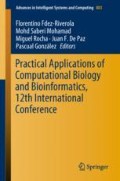Abstract
The large scale genome datasets that are now available can provide unprecedented insight into the evolution of genes and gene families. Nevertheless, handling and transforming such datasets into the desired format for downstream analyses is often a difficult and time-consuming task for researchers without a background in informatics. Here, we present a simple and fast protocol for data preparation and high quality phylogenetic tree inferences using simple to install cross-platform software applications with rich graphical interfaces. To illustrate its potential, this protocol was used to provide insight into the evolution of GULO gene in animals, a gene that encodes the enzyme responsible for the last step of vitamin C synthesis in this group of organisms. We find that GULO is always a single copy gene in all animal groups with the exception of Echinodermata. Surprisingly, we find potentially functional GULO genes in several Prostotomian groups such as Molluscs, Priapulida and Arachnida. To our knowledge, this is the first time a putative functional GULO gene is reported in Protostomians. All previously reported GULO gene losses were easily identified using the presented protocol.
Access this chapter
Tax calculation will be finalised at checkout
Purchases are for personal use only
References
Patananan, A.N., Budenholzer, L.M., Pedraza, M.E., Torres, E.R., Adler, L.N., Clarke, S.G.: The invertebrate Caenorhabditis elegans biosynthesizes ascorbate. Arch. Biochem. Biophys. 569, 32–44 (2015)
Drouin, G., Godin, J.-R., Page, B.: The genetics of vitamin C loss in vertebrates. Curr. Genomics 12, 371–378 (2011)
Leferink, N.G.H., Jose, M.D.F., van den Berg, W.A.M., van Berkel, W.J.H.: Functional assignment of Glu386 and Arg388 in the active site of l-galactono-γ-lactone dehydrogenase. FEBS Lett. 583, 3199–3203 (2009)
Kumar, S., Stecher, G., Tamura, K.: MEGA7: molecular evolutionary genetics analysis version 7.0 for bigger datasets. Mol. Biol. Evol. 33, 1870–1874 (2016)
Reboiro-Jato, D., Reboiro-Jato, M., Fdez-Riverola, F., Vieira, C.P., Fonseca, N.A., Vieira, J.: ADOPS–Automatic Detection Of Positively Selected Sites. J. Integr. Bioinform. 9, 200 (2012)
Wheeler, G., Ishikawa, T., Pornsaksit, V., Smirnoff, N.: Evolution of alternative biosynthetic pathways for vitamin C following plastid acquisition in photosynthetic eukaryotes. eLife. 4 (2015)
Helgen, K.M.: The mammal family tree. Science 334, 458–459 (2011)
Cui, J., Yuan, X., Wang, L., Jones, G., Zhang, S.: Recent loss of vitamin C biosynthesis ability in bats. PLoS ONE 6, e27114 (2011)
Putnam, N.H., Butts, T., Ferrier, D.E.K., Furlong, R.F., Hellsten, U., Kawashima, T., Robinson-Rechavi, M., Shoguchi, E., Terry, A., Yu, J.-K., Benito-Gutiérrez, E., Dubchak, I., Garcia-Fernàndez, J., Gibson-Brown, J.J., Grigoriev, I.V., Horton, A.C., de Jong, P.J., Jurka, J., Kapitonov, V.V., Kohara, Y., Kuroki, Y., Lindquist, E., Lucas, S., Osoegawa, K., Pennacchio, L.A., Salamov, A.A., Satou, Y., Sauka-Spengler, T., Schmutz, J., Shin-I, T., Toyoda, A., Bronner-Fraser, M., Fujiyama, A., Holland, L.Z., Holland, P.W.H., Satoh, N., Rokhsar, D.S.: The amphioxus genome and the evolution of the chordate karyotype. Nature 453, 1064–1071 (2008)
Dehal, P., Boore, J.L.: Two rounds of whole genome duplication in the ancestral vertebrate. PLoS Biol. 3, e314 (2005)
Taylor, J.S.: Genome duplication, a trait shared by 22,000 species of ray-finned fish. Genome Res. 13, 382–390 (2003)
Session, A.M., Uno, Y., Kwon, T., Chapman, J.A., Toyoda, A., Takahashi, S., Fukui, A., Hikosaka, A., Suzuki, A., Kondo, M., van Heeringen, S.J., Quigley, I., Heinz, S., Ogino, H., Ochi, H., Hellsten, U., Lyons, J.B., Simakov, O., Putnam, N., Stites, J., Kuroki, Y., Tanaka, T., Michiue, T., Watanabe, M., Bogdanovic, O., Lister, R., Georgiou, G., Paranjpe, S.S., van Kruijsbergen, I., Shu, S., Carlson, J., Kinoshita, T., Ohta, Y., Mawaribuchi, S., Jenkins, J., Grimwood, J., Schmutz, J., Mitros, T., Mozaffari, S.V., Suzuki, Y., Haramoto, Y., Yamamoto, T.S., Takagi, C., Heald, R., Miller, K., Haudenschild, C., Kitzman, J., Nakayama, T., Izutsu, Y., Robert, J., Fortriede, J., Burns, K., Lotay, V., Karimi, K., Yasuoka, Y., Dichmann, D.S., Flajnik, M.F., Houston, D.W., Shendure, J., DuPasquier, L., Vize, P.D., Zorn, A.M., Ito, M., Marcotte, E.M., Wallingford, J.B., Ito, Y., Asashima, M., Ueno, N., Matsuda, Y., Veenstra, G.J.C., Fujiyama, A., Harland, R.M., Taira, M., Rokhsar, D.S.: Genome evolution in the allotetraploid frog Xenopus laevis. Nature 538, 336–343 (2016)
Acknowledgements
This article is a result of the project Norte-01-0145-FEDER-000008 - Porto Neurosciences and Neurologic Disease Research Initiative at I3S, supported by Norte Portugal Regional Operational Programme (NORTE 2020), under the PORTUGAL 2020 Partnership Agreement, through the European Regional Development Fund (FEDER). Financial support from the Xunta de Galicia (Centro singular de investigación de Galicia accreditation 2016-2019) and the European Union (European Regional Development Fund - ERDF), is gratefully acknowledged. H. López-Fernández is supported by a post-doctoral fellowship from Xunta de Galicia (ED481B 2016/068-0).
Author information
Authors and Affiliations
Corresponding author
Editor information
Editors and Affiliations
Rights and permissions
Copyright information
© 2019 Springer Nature Switzerland AG
About this paper
Cite this paper
López-Fernández, H. et al. (2019). A Bioinformatics Protocol for Quickly Creating Large-Scale Phylogenetic Trees. In: Fdez-Riverola, F., Mohamad, M., Rocha, M., De Paz, J., González, P. (eds) Practical Applications of Computational Biology and Bioinformatics, 12th International Conference. PACBB2018 2018. Advances in Intelligent Systems and Computing, vol 803. Springer, Cham. https://doi.org/10.1007/978-3-319-98702-6_11
Download citation
DOI: https://doi.org/10.1007/978-3-319-98702-6_11
Published:
Publisher Name: Springer, Cham
Print ISBN: 978-3-319-98701-9
Online ISBN: 978-3-319-98702-6
eBook Packages: Intelligent Technologies and RoboticsIntelligent Technologies and Robotics (R0)

